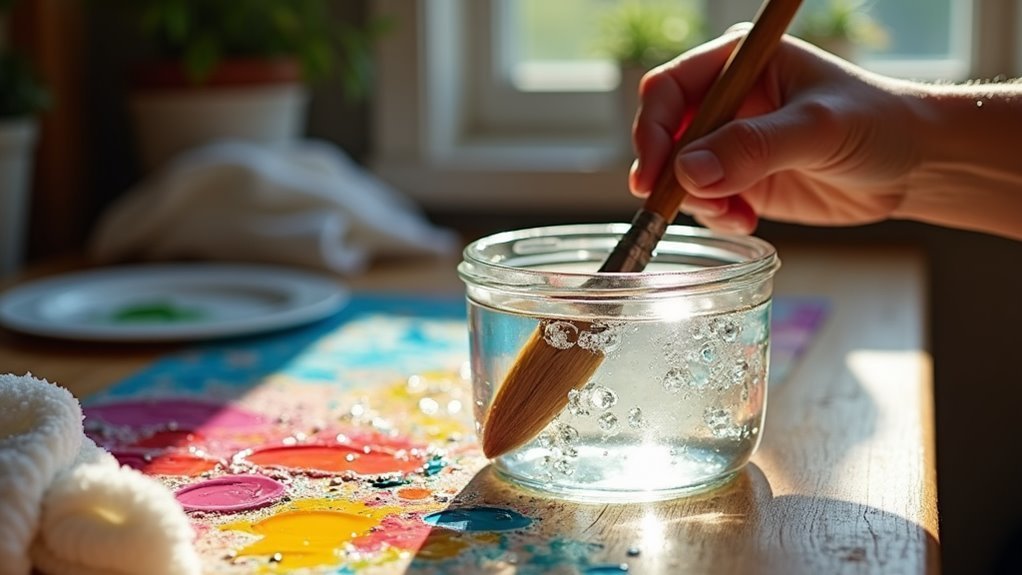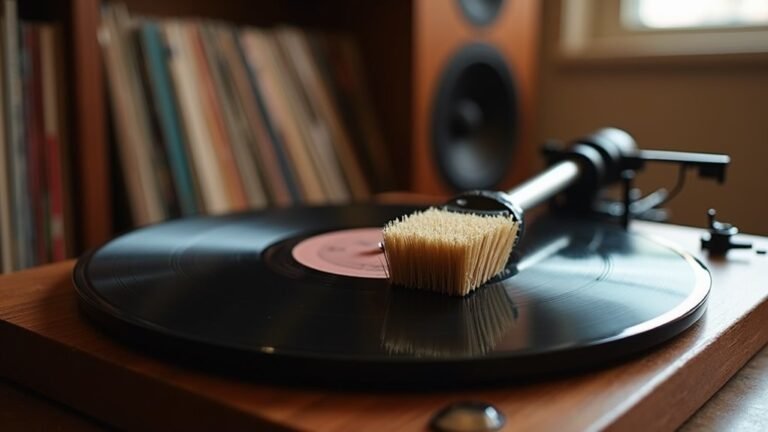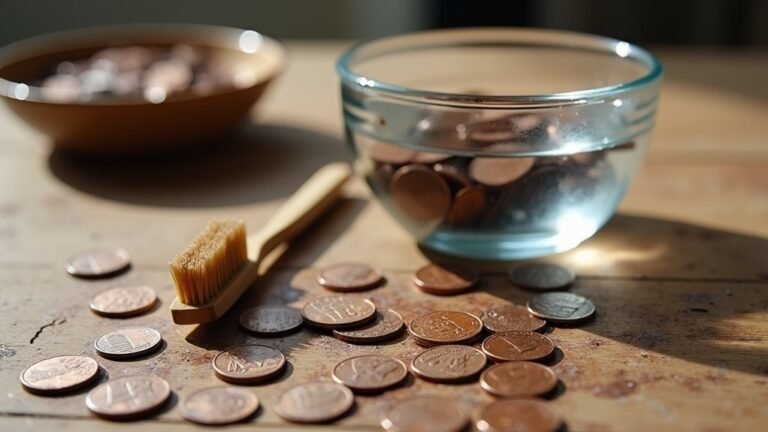We've all faced those stiff, paint-covered brushes after making art, wondering how to save them. While acrylic paint is great for creating, it can really damage our brushes if we don't clean them the right way. Taking care of your brushes doesn't have to be hard – it just takes a little know-how to keep them working like new.
According to Dick Blick Art Materials, "The number one enemy of brush life is paint that's allowed to dry in the bristles, causing them to become hard and unusable."
Whether you're new to painting or have been doing it for years, learning the right way to clean your brushes will save you money and keep them ready for your next art project. Let's look at how to take care of these important tools.
Brush Cleaning Made Simple

Have you ever wondered why some artists' brushes last for years while others become stiff and unusable after just a few painting sessions?
The secret lies in how you CLEAN YOUR BRUSHES. Since acrylic paint dries quickly, we need to be proactive with our cleaning solutions.
Let's start by wiping excess paint onto paper towels, then rinse in a dedicated water bucket between uses.
Let's explore the essential aspects of cleaning acrylic paint brushes, including both the must-do steps and common mistakes to avoid.
We'll break down the proper cleaning techniques into clear, manageable steps that will help extend the life of your brushes.
Together, we'll discover how taking good care of your art tools can make a significant difference in your painting experience and the quality of your work.
Things to Do When Cleaning Acrylic Paint Brushes
Proper brush cleaning is essential for maintaining the quality and longevity of your acrylic paint brushes. The cleaning process involves multiple steps that remove paint residue, condition the bristles, and guarantee proper drying to prevent damage.
Following a consistent cleaning routine will help preserve the shape and performance of your brushes, ultimately saving you money and improving your painting results.
- Remove excess paint with paper towels or rags to prevent paint from hardening on bristles
- Use a designated container (Bucket #2) filled with clean water for initial paint removal
- Apply artist soap like The Masters Brush Cleaner to break down remaining paint residue
- Swish brush in rinse water to guarantee thorough cleaning of all paint particles
- Rinse again in clean water (Bucket #1) to remove any soap residue
- Reshape bristles gently with fingers to maintain proper brush form
- Place brushes flat on a clean towel to dry, avoiding upright storage
- Clean brushes regularly during painting sessions to prevent paint buildup
- Check bristles for complete paint removal before final storage
- Store brushes horizontally or bristles-up to maintain shape and prevent damage
Things to Avoid When Cleaning Acrylic Paint Brushes
Proper brush cleaning techniques are essential for maintaining the quality and longevity of your acrylic paint brushes. While many artists focus on what they should do, understanding what not to do is equally important for preserving these valuable tools and ensuring they continue to perform well for years to come.
- Cleaning in palm – Scrubbing brushes against your skin can force paint particles into your pores and damage bristles.
- Extended water soaking – Leaving brushes in water causes ferrule damage and bristle loosening.
- Aggressive scrubbing – Harsh cleaning motions break down bristles and reduce brush lifespan.
- Drain disposal – Paint-contaminated water harms plumbing systems and the environment.
- Harsh solvents – Regular use of strong chemicals like lacquer thinner deteriorates brush fibers.
- Upright drying – Storing wet brushes vertically allows water to seep into ferrule, causing rust and loosening.
- Hot water cleaning – Excessive heat can deform synthetic bristles and damage brush shape.
- Storing bristles down – Crushing bristles by improper storage leads to permanent brush deformation.
Steps
Properly cleaning acrylic paint brushes is essential for maintaining their quality and extending their lifespan. The process requires careful attention to remove all paint residues without damaging the bristles, using the right cleaning materials and techniques to guarantee the brushes remain in prime condition for future use.
Step 1: Wipe excess paint from brushes using paper towels or rags
Step 2: Fill two separate buckets with water (label them Bucket #1 and Bucket #2)
Step 3: Rinse brushes in Bucket #2 and apply artist soap or The Masters Brush Cleaner
Step 4: Work the soap through the bristles by swishing the brush in the water
Step 5: Continue cleaning until all paint residue is removed
Step 6: Rinse brushes in clean water from Bucket #1 to remove soap
Step 7: Place brushes flat on a clean towel
Step 8: Allow brushes to air dry completely while lying horizontal
Final Thoughts
Taking care of your acrylic paint brushes doesn't need to be complicated, but it's crucial to follow these cleaning steps consistently after each use.
By incorporating proper brush cleaning techniques, using clean water and products like Masters Brush Cleaner, we can prevent dried paint from ruining our tools.

Taking proper care of your acrylic paint brushes is vital for maintaining their quality and extending their lifespan. The simple habits of immediate cleaning, proper rinsing techniques, and correct drying methods will save you money in the long run by preserving your brushes.
While cleaning brushes may seem like a tedious task, it's a fundamental part of the artistic process that protects your investment and guarantees your tools are always ready for your next creative project.
Start implementing these brush care practices today, and you'll notice the difference in both your painting experience and the longevity of your brushes.






